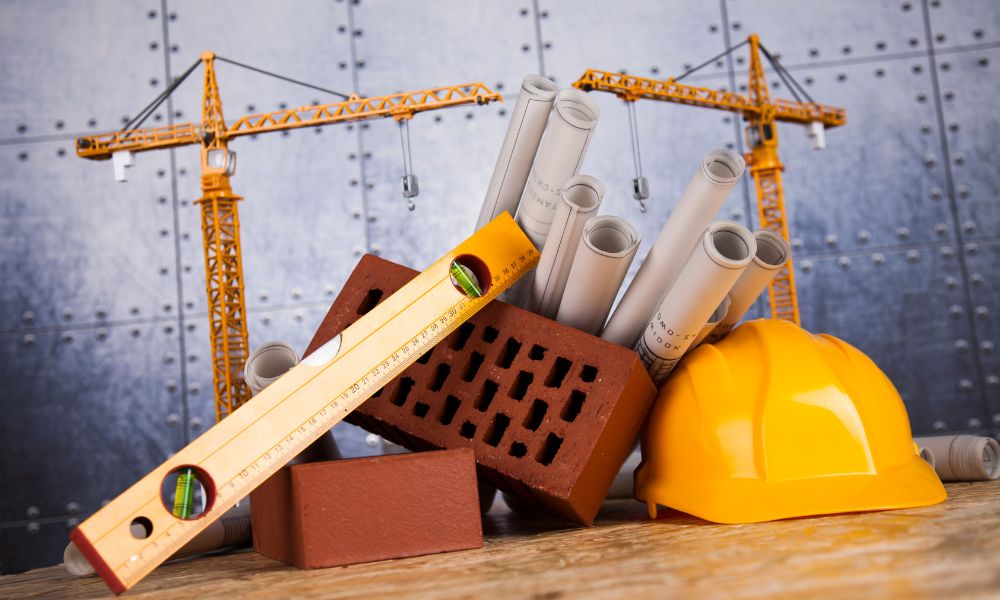In recent years, digital tools have revolutionized various aspects of the construction industry, with tendering being one of the most impacted processes. Traditional tendering methods, often involving complex paperwork, manual estimations, and lengthy bid evaluations, have given way to efficient digital solutions. From streamlining document management to enhancing cost accuracy, digital tools offer advantages that are transforming construction tendering into a faster, more precise, and highly collaborative process.
This blog explores the ways digital tools are transforming construction tendering, the benefits they bring to quantity surveyors, contractors, and clients, and how adopting these technologies can give construction firms a competitive edge. Let’s dive into the digital evolution of tendering and see how technology is reshaping this critical phase of construction project management.
The Traditional Tendering Process and Its Challenges
Traditionally, tendering in construction was a time-consuming, paper-heavy process that required extensive manual effort. Key steps included preparing and sending out tender documents, estimating project costs, receiving and evaluating bids, and managing communication with multiple contractors.
Common challenges with traditional tendering included:
- Time and Resource Intensive: Manual processes required significant time and effort to manage documents, prepare estimates, and conduct bid evaluations.
- Error-Prone Calculations: Manual cost estimations increased the risk of human error, leading to inaccurate bids and potential budget issues later in the project.
- Lack of Transparency and Collaboration: Communication gaps between clients, contractors, and quantity surveyors often led to misinterpretations or missed details.
- Limited Access to Real-Time Data: The absence of real-time data made it difficult to adjust estimates based on current material prices, labor rates, or project scope changes.
With these challenges, it became clear that digital transformation was necessary to streamline and enhance the tendering process.
Key Digital Tools Transforming Construction Tendering
Digital tools offer solutions to many of the challenges faced in traditional tendering. Here are some of the main types of digital tools making a difference:
Tender Management Software
Tender management software platforms provide a centralized space for managing all aspects of the tendering process, from document creation to bid evaluation.
- Features: These platforms allow users to create, store, and share tender documents, manage bids, and track project milestones. They also facilitate collaboration by enabling stakeholders to access and review documents in real-time.
- Examples: Procore, Buildertrend, and Autodesk Construction Cloud are popular platforms that support tender management and construction project coordination.
Benefits: Tender management software reduces paperwork, improves document organization, and enhances communication between project stakeholders, resulting in a more streamlined and efficient tendering process.
Cost Estimation Software
Cost estimation software uses digital algorithms and data integration to generate more accurate and detailed project cost estimates. By reducing manual input and human error, these tools help quantity surveyors and contractors create reliable bids.
- Features: Cost estimation software can include automated quantity takeoffs, real-time material pricing, and labor cost calculation tools. Some software also integrates with Building Information Modeling (BIM) for 3D modeling and cost forecasting.
- Examples: Bluebeam, Kubla Cubed, and Sage Estimating are commonly used for digital cost estimation in construction.
Benefits: Accurate cost estimation not only reduces bid errors but also provides clients with a clear picture of the project budget, increasing the likelihood of winning bids.

Building Information Modeling (BIM)
BIM is a digital representation of the physical and functional aspects of a project. Beyond its use in design and construction, BIM also plays an essential role in tendering by providing a comprehensive model of the project scope.
- Features: BIM platforms support 3D modeling, allowing for visualizations that help quantity surveyors better understand the project requirements and constraints. BIM also offers integration with cost estimation and project management software.
- Examples: Autodesk Revit, ArchiCAD, and Navisworks are widely used BIM tools in construction.
Benefits: BIM improves project accuracy by visually representing project elements and their associated costs, enabling better communication with clients and contractors and enhancing transparency in the tendering process.
Document Management Software
Document management software centralizes project documentation, making it easy to organize, share, and secure documents relevant to tendering. This is particularly beneficial in projects where large volumes of information need to be managed efficiently.
- Features: These tools allow for document versioning, access control, and collaboration. Users can store contracts, drawings, and bid documents in a secure and accessible environment.
- Examples: Procore, SharePoint, and Dropbox Business are commonly used for document management in construction.
Benefits: Document management software streamlines file organization, reduces the risk of lost information, and enables stakeholders to access the latest documents, reducing errors and delays in the tendering process.
Collaboration and Communication Tools
Communication tools facilitate real-time collaboration between project stakeholders, bridging the gap between quantity surveyors, contractors, and clients. This is essential for addressing questions, clarifying requirements, and resolving issues promptly.
- Features: Collaboration tools offer chat, video conferencing, and file-sharing capabilities. Some platforms also support task management and tracking.
- Examples: Slack, Microsoft Teams, and Zoom are widely used collaboration tools in the construction industry.
Benefits: Improved communication speeds up decision-making, keeps all parties on the same page, and enhances project alignment, which is critical for timely and successful tender submissions.
How Digital Tools Benefit the Tendering Process
The adoption of digital tools in tendering provides numerous benefits that streamline and enhance each phase of the process. Here’s how these tools impact tendering in a positive way:
Increased Efficiency and Reduced Turnaround Time
Digital tools automate repetitive tasks, reducing the time required to complete each tendering phase. Cost estimation software, for example, generates calculations quickly, while document management systems eliminate the need to manually organize paperwork.
- Outcome: Faster bid preparation and review, allowing more tenders to be completed in less time.
Enhanced Accuracy in Cost Estimations
By integrating real-time data and using algorithms, digital estimation tools reduce human error and improve cost accuracy. Accurate estimates help create competitive bids while ensuring profitability.
- Outcome: More reliable bids that clients can trust, increasing the chances of winning projects.
Improved Collaboration and Transparency
With centralized platforms for document management and communication, stakeholders can easily access and share information. This transparency helps clients, contractors, and quantity surveyors stay aligned on project requirements and timelines.
- Outcome: Improved client satisfaction and stronger working relationships with contractors and suppliers.
Real-Time Access to Project Data
Digital tools provide access to up-to-date project data, allowing quantity surveyors to adjust bids based on the latest material costs, labor rates, or project changes. This flexibility is essential in today’s dynamic construction environment.
- Outcome: Realistic and timely bids that reflect the current market, ensuring project viability.
Sustainability and Reduced Environmental Impact
Digital documentation and collaboration reduce the need for physical paperwork, minimizing the environmental impact of printing and storing large volumes of paper. Additionally, BIM models support sustainable construction practices by enabling efficient material planning.
- Outcome: An eco-friendlier tendering process that aligns with modern sustainability goals.
Overcoming Challenges in Adopting Digital Tools
While digital tools offer tremendous benefits, implementing them can present challenges. Here are some common barriers and solutions to facilitate a smooth transition:
- Learning Curve: Transitioning from traditional to digital methods requires training. Offer team members training sessions and resources to ease adoption.
- Initial Investment: The cost of software can be a concern. Consider scalable solutions that allow you to start small and expand features as the business grows.
- Data Security: With increased digital data, security becomes a priority. Choose software with robust security features and backup options to protect sensitive information.
Embracing these tools enables firms to stay competitive in the digital age, transforming tendering into a streamlined, efficient process.
The Future of Digital Tools in Construction Tendering
Digital tools in tendering continue to evolve, with innovations such as artificial intelligence (AI) and data analytics on the horizon. AI can further automate cost estimation, risk assessment, and bid evaluation, while data analytics provides insights that can improve decision-making.
Future developments will likely bring even more collaborative, data-driven platforms that improve project accuracy, reduce risks, and enhance client relationships. By staying ahead of these trends, quantity surveyors and construction firms can enhance their tendering processes and set themselves up for success in an increasingly digital construction landscape.
Conclusion
Digital tools are transforming construction tendering by improving accuracy, efficiency, and collaboration among stakeholders. From tender management software to cost estimation platforms and BIM integration, these tools streamline each step of the tendering process, helping quantity surveyors, contractors, and clients achieve better project outcomes.
Adopting digital tools not only helps secure more projects but also builds credibility with clients, as they experience the benefits of fast, accurate, and transparent tender submissions. For professionals looking to advance in quantity surveying, mastering these digital tools is essential in today’s competitive market.
Want to Gain the Skills Needed to Succeed in Digital Tendering and Quantity Surveying?
Enroll in our Quantity Surveying Course Online to learn about digital tools, cost estimation, and project management techniques. Ideal for beginners and professionals alike, this course provides hands-on insights to excel in the modern construction industry.
Sign up today and transform your QS skills!




